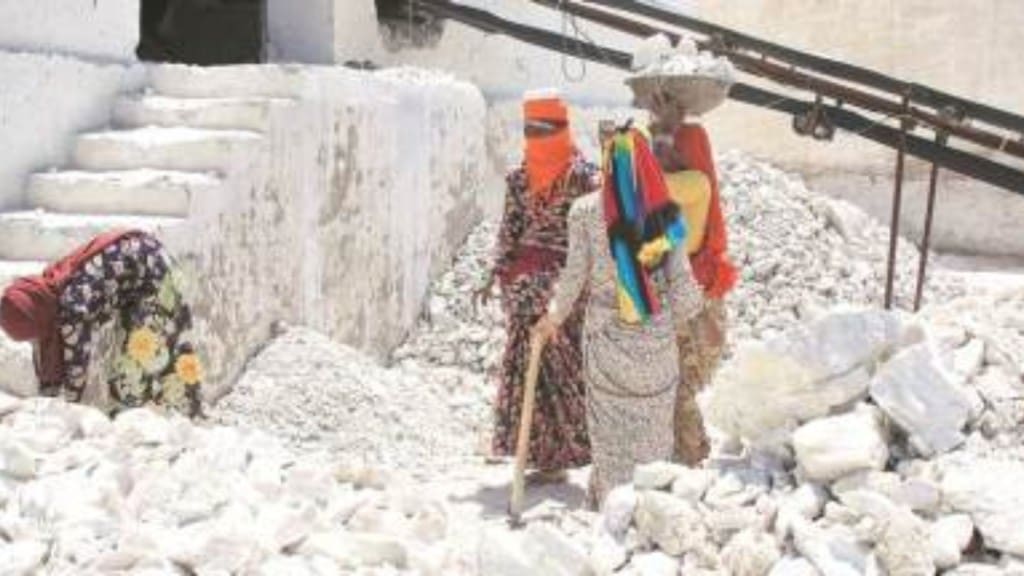The issue of the female labour force participation rate (LFPR) is an old one and has been extensively written about. The periodic labour force survey (PLFS) has a precise definition of LFPR and it is what you would expect it to be. “LFPR is defined as the percentage of persons in labour force (i.e. working or seeking or available for work) in the population.” LFPR is percentage of population (in working age-groups) that is employed, or is looking for work, but is unemployed. Discussions about female LFPR are not new in the literature and have focused on some inter-related issues.
First, why is female LFPR low in India, compared not only to developed countries, but also several countries in East Asia? Second, has female LFPR declined over time? Third, if it has declined over time, what are the reasons? Fourth, do these answers vary, depending on state, rural/urban status, slice of society and sector? Lastly, to the extent there is a gender gap in LFPR, has it been increased over time? Positively correlated with development, both male and female LFPR should be higher. That proposition is axiomatic and there can be no debate about it. For instance, in 2015, McKinsey Global Institute published a report titled The power of parity: Advancing women’s equality in India. This argued that if India achieved gender equality, there would be $700 billion of added GDP in 2025 and an increment to annual GDP growth by 1.4%. There are other such studies with other such numbers. The numbers can always be questioned, on grounds of assumptions used to arrive at them, but not the contention.
In any informal economy, where employer-employee relationships are not that common, arriving at numbers like LFPR is difficult. An enterprise survey won’t work. Despite increasing formalisation, encouraged by various government interventions, self-employment is large, and even within the formal sector, informal contracts are the norm. Roughly, 50%+ of employment is self-employment, 20%+ is wage employment with a regular contract, and the rest is casual labour. Hence, employment numbers have to be generated through household surveys, not enterprise ones. But, on this, Economic Survey 2022-23 highlights an important measurement issue. To quote, “The common narrative of Indian women’s low LFPR misses the reality of working females integral to the economy of the household and the country. Measurement of employment through the survey design and content can make a significant difference to final LFPR estimates, and this matters more for measuring female LFPR than male LFPR. Here, three main measurement issues have been highlighted: overly broad categories, reliance on a single question to categorize labour force status, and the narrow approach of limiting productive work to labour force participation.” No one is questioning the issue of a low female LFPR or the gender divide. Instead, the question is about how low is “low”.
On the first measurement issue, Survey flags activity code number 93 of National Sample Survey Organisation (NSSO), on the basis of which, respondents answer questions. This activity code 93 states, “Attended domestic duties and was also engaged in free collection of goods (vegetables, roots, firewood, cattle feed, etc.), sewing, tailoring, weaving, etc. for household use.” The interviewer’s instructions are, “As already explained, the activity status of a person falls into one of three broad categories, viz. employed (any of codes 11-72), unemployed (any of codes 81 or 82) and out of labour force (any of codes 91-98).” The under-count due to unpaid domestic work is as old as the hills. Every undergraduate economics text will mention it. But the point being made in Survey is beyond this unpaid domestic work issue. “Use of overly broad categories clubbing productive work (collection of firewood, poultry, farming, etc.) with domestic duties can in one sweep shift a significant proportion of women in the labour force into the out-of- labour-force category. For example, unless the production of primary goods is identified as the main activity by the respondent, the PLFS questionnaire would categorize women who do both domestic activities and primary goods production/collection into ‘Activity Code 93’ and thus out-of-the-labour-force.” Apples are being clubbed with oranges and lead to the under-count. Add to this, two other issues, lack of recovery questions that are needed to gauge veracity of a survey, and a narrow definition of work equated with employment.
Accordingly, Survey recomputes female LFPR, with a better definition. To quote again, “Adding the proportion of women in Activity code 93 to the official LFPR yields an Augmented Female LFPR of 46.2 per cent for FY21 for ages 15 years and above, much higher than the 32.5 per cent estimated by the conventional definition (PLFS data for usual status). A similar attempt has been made in an International Labour Organisation (ILO) research paper (published in 2014), arriving at a female LFPR of 56.4 per cent in India for 2012, against the far lower official estimate of 31.2 per cent for 2012.” One can quibble about the methodological assumptions made in the Survey or ILO estimation. However, the fact remains that the differences are dramatic, too high to be explained away by such assumptions. As in many other areas, we have a serious problem with quality of our statistics, something ministry of statistics and programme implementation (MOSPI) should look at. If inferior statistics are our own creation, there is nothing much to complain when global rankings use them and India doesn’t perform that well.
(The author is Chairman, EAC-PM)

